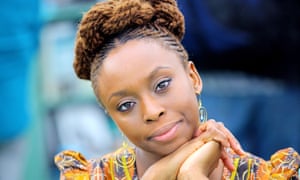 If you're in the Puget Sound area, please join me for one of several events in the next two months to celebrate the publication of my novels inspired by the relationship between Emilie Demant Hatt and Carl Nielsen
If you're in the Puget Sound area, please join me for one of several events in the next two months to celebrate the publication of my novels inspired by the relationship between Emilie Demant Hatt and Carl Nielsen
October 2, Friday, at 7:30 p.m. at the Swedish Club, 1920 Dexter Ave N, Seattle, WA 98109. In honor of the Danish
connection, the Club’s chefs will be preparing a tasting menu of Danish treats,
available from 6 p.m. on. If you’ve never been to the Swedish Club, it’s a
fabulous World’s Fair-era building with a view of Lake Union and a cocktail bar
out of “The
Jetsons.”
November 1, Sunday, 3 p.m. at the Nordic Heritage Museum, 3014 NW 67th Street Seattle, WA 98117. I’ll be talking for the novels and signing books before a 4 p.m.
concert with the Novus Project featuring Carl Nielsen’s work (tickets for the
concert are available at www.nordicmuseum.org
$15 for Museum members, $20 general admission).
November 14, Saturday, 7 p.m. at the Writers' Workshoppe in Port Townsend, 820 Water Street, PT, 360 379 2617. Earlier that day (10-3), I'll be giving a workshop on Writing Historical Fiction.
Sjoholm gives readers vibrant
characters whose personal travails are all the more engrossing for the cultural
upheavals that energize them. An entertaining, thoughtful story of old-fashioned
romance, complicated by dawning modern mores.
–Kirkus Reviews
These are thoughtful, glitteringly
intelligent novels, as shrewd about shifting social conditions as they are about
the workings of the human heart. – Editor’s Choice, Historical
Novel Review
In Fossil Island, Nik is a fourteen-year-old tomboy who spends her time dreaming and
fossilizing on the nearby island of Fur, a geologic marvel. Her older sister Maj is studying to be a
teacher but is starting to entertain ideas of women’s rights introduced by her
new friend Eva Sandström. Both girls know they must marry eventually—just not
yet. The summer of 1887 begins with a visit from the girls’ aunt, who brings
with her from Copenhagen a young man of twenty-two, who plans to become a
composer. Flirtation turns to a secret romance between Nik and Carl, as Maj
weighs an engagement over her intense friendship with Eva. The following summer
brings the sisters’ intertwining stories to a head as they spend a month in
Copenhagen and juggle passion, jealousy, and violent events with how they can
find independent lives of their own.
The story of Nik and Maj continues in
the sequel, The Former World. Now
sixteen, Nik resumes her relationship with the passionate Carl Nielsen, who
comes once more for a summer visit in 1889 to her provincial village. But their
bonds are strained by convention and Nik’s own stirrings of ambition to study
art. Now twenty-one, Maj finds a teaching job, but her mother hasn’t given up
the idea her eldest daughter will marry. Taking place over the course of two
dramatic years, the sisters’ lives will be utterly changed by love, heartbreak,
illness, and death. A vivid portrait of two stubborn daughters who love their
family, but yearn for freedom on their own terms, The Former World recreates a time when
women’s lives and Danish society were in transition. Whether it’s Nik learning
to cycle or Maj dreaming of working in Brooklyn as a teacher, Nik and Maj are
memorable characters in a setting both distant in time yet familiar.
~
"Fossil
Island
reads as well as any Jane Austen novel, but its political themes and social
commentary really matter to the 21st-century reader. As in an Austen
book, the characters are engaged with house parties, daily activities,
relationships and, always and especially, conversations. However, this novel not
only offers an insightful, engaging view of personal manners, social mores and
romantic love, but also it deals with the politics of manners, mores, and
love. In particular it illuminates the social history of women of the time,
including lesbians and other women who wanted to live independent lives.
Fossil Island brought to mind the wonderful and internationally acclaimed
historical novels of Sarah Waters. Fossil Island, like Waters’s books,
made me gasp out loud at its plot turns. The characters are so richly drawn, so
compellingly human and difficult and funny and likable, and their interactions
so humanly complicated, so impossible and so tender, that I think any fiction
reader or history lover will read this, as I did, with avid enthusiasm.”
––Gillian Kendall, author of How I Became a
Human Being
~
“Barbara Sjoholm transports us to
Denmark in the 1880s, a time when traditional customs and ideas were giving way
to new technology and modern thinking, and enchants us with the story of a
girl’s first love.
Fossil Island captures beautifully the conflicting worlds the young
lovers Carl and Nik move between: the harmony and lazy rhythms of village life
on Jutland’s Limfjord, the dissonance and hectic tempos of Copenhagen. Nik
experiences these disparate worlds with the apprehension and excitement of
adolescence. In the city and the countryside she listens to young men and women
debate the new ideas, but it is in the city Nik meets women who, by living life
on their own terms, will make history and guide her on her own path: artists,
writers, musicians, even her older sister’s feminist classmate who sails to
America in search of work and adventure. Fossil Island is a book to savor—you
won’t want to put it down, you won’t want it to end. ––Katherine Hanson, editor
of An Everyday Story: Norwegian Women’s
Fiction




